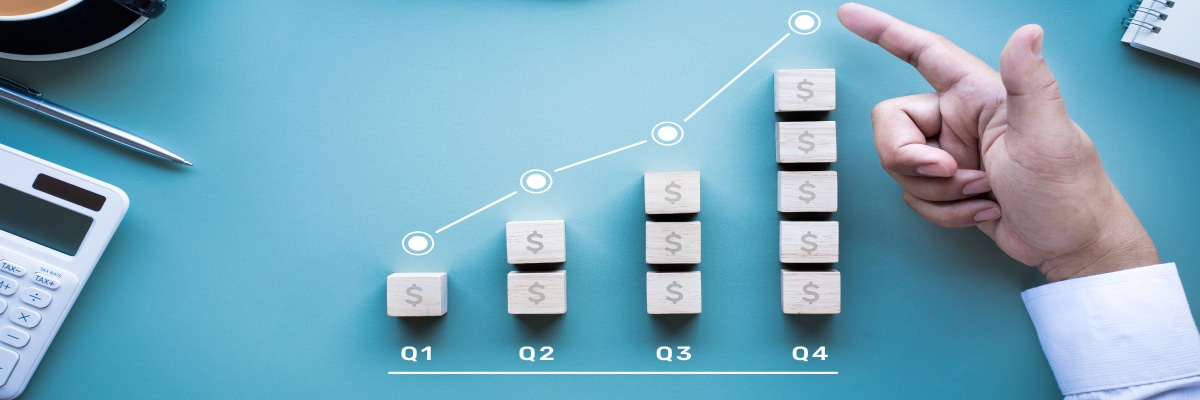Products & Services
From the industry's best ticketing system to unified food & beverage and retail operations, Gateway offers world-class solutions to increase revenue.
Europe User Group Meeting | June 11 – 12 | The Ironbridge Gorge, United Kingdom
By Chad Wallace, Business Solutions Architect at Gateway Ticketing Systems
If you operate a venue or attraction, you likely offer multiple ticket types: adult general admission, senior, military, child, etc. Each are priced uniquely and target different audiences, and you likely wouldn’t dare throw them into an all-inclusive bucket in your general ledger. But think about tickets sold on a Monday vs. a Saturday, or tickets sold on sunny days vs. cloudy days. Chances are you have vastly different attendance and audiences visiting your venue at these different times. So why would you treat them as if they are the same type of ticket?
A dynamic pricing strategy helps address this question. And here’s six reasons why you need to consider it.

With a static pricing model, your guest and external factors like weather, weekends or work are determining when they visit. With a dynamic pricing model, you start to have a say too. Let’s say you want to increase attendance on Mondays and Tuesdays, and through your dynamic pricing model you determine a sustainable price decrease for tickets on these days. You may now see an increase in attendance among stay-at-home parents and/or senior citizens, possibly even school field trips due to the more affordable ticket prices.

Having trouble staffing accordingly with attendance swings? Always running out of hot dog rolls on those busy walk-up days? With a dynamic pricing strategy, you can plan better for these issues. Attendance becomes more predictable because you’re exerting more influence on it. Then as more and more performance data comes in, it becomes even more predictable.

Perhaps you’re aiming to upsell more of your daily visitors into memberships/season passes or packages, or maybe you just made selling a higher percentage of tickets online your primary goal for the season. Dynamic pricing can help lay the foundation for achieving these goals.
Paying less on Monday or Tuesday may encourage a walk-up guest to purchase a more expensive package or even a membership/pass.
With dynamic pricing, you don’t just have to adjust prices based on time of day or week or the weather. You can also adjust based on channel. So if you have an initiative to drive more online sales, you can offer a more affordable ticket online vs. that same ticket at your on-premise counter.
Now that you’ve used your dynamic pricing data to staff appropriately, ticketing staff have the time to walk guests through lengthier upsell prompts on premise and really put in the time to answer questions and explain the benefits of a membership or season pass.

Something has to give, right? You can sell tickets at a higher price and make more money, but then your venue becomes less available to those who either can’t or choose not to afford those prices. Or, you can stick to your mission of making your venue available to as many visitors as possible with lower ticket prices, but potentially take the hit to your bottom line. It’s the age-old debate of revenue vs. accessibility.
But dynamic pricing ends that debate. Increasing revenue and increasing accessibility don’t have to be mutually exclusive when you set different prices for different times of day, different days of the week, or via different sales channels.

Some venues will say: “But I already do this.” Of course you sell tickets on Mondays for three dollars less than you do on Saturdays. It’s common sense.
Technically then, you already have a basic dynamic pricing strategy.
It’s important now to distinguish between a dynamic pricing strategy, and Dynamic Pricing, which is a software solution you can adopt to assist with your strategy. We have two partners that we work with, Digonex and Pricetag, who offer Dynamic Pricing solutions. With these solutions, everything can be automated. They will adjust the pricing for you based on your criteria. And as your strategy progresses, they collect and aggregate the data and can even make these decisions for you. The solutions can recommend more opportunities to increase or decrease your costs to drive more revenue based on your past performance.

A typical venue we work with that adopts a dynamic pricing strategy alongside a Dynamic Pricing solution sees an increase in revenue in year one between 8-20%. It’s hard to argue with the results.
 But, Watch Out for the Trap
But, Watch Out for the TrapFor your guests, dynamic pricing is all about messaging. Many are going to wonder why prices vary so greatly for the same ticket type. Some may even be irritated. And it’s up to you to provide the right explanation on your website, at your ticket counter, and at any other sales channels as to why this is.
I had a real-life experience with this when I tried to buy tickets to a Christmas Lights event at a local amusement park. I followed an advertisement for $16 tickets. When I got to the web store, the font for the $16 tickets couldn’t have been bigger or bolder. They were even $16 in my shopping cart. But every time I hit the checkout button the price changed to $29. Turns out, tickets were “as low as” $16, but only for certain days of the week, and only during the day. Being in the industry, I was able to figure this out fairly quickly. But I can imagine that the poor messaging on their web site led to some unhappy guests and some challenging phone calls in the call center.
During our 2019 Galaxy User Group Meeting, the Cincinnati Zoo presented on how a dynamic pricing strategy for general admission and special event tickets helped increase revenue by almost $900K year-over-year. Watch the presentation right here.
If you’d like to find out more about Dynamic Pricing and how it can be a winning strategy, reach out to your Gateway Salesperson or Account Manager with any questions or to get more information.